Withania somnifera
| Botanical Name | Withania somnifera |
|||||||||||
| Family | Solanaceae - The nightshade or potato family |
|||||||||||
| Pronunciation | with-AN-ee-uh som-NIF-er-uh |
|||||||||||
| Common Name(s) |
English: Indian ginseng; Poisonous Gooseberry; Winter cherry; Ashwagandha
Afrikaans: Bitterappelliefie ; Geneesblaarbossie
IsiXhosa: ubuvimba
IsiZulu: Ubuvimba; Umaqhunsula; isibhaha
Sesotho: bofepha
siSwati: Vimhepe
Other: Ajagandha, Kanaje (Hindi); Amukkara (Tamil)
|
|||||||||||
| Plant Group |
|
|||||||||||
| Plant Size |
|
|||||||||||
| Position |
|
|||||||||||
| General Information |
|
|||||||||||
| Specific Information | Withania somnifera has been used for thousands of years as a herbal remedy in Ayurvedic medicine in India and is more usually grown as a medicinal plant, rather than a garden subject. It is a medium shrub growing up to a meter tall. The branches are covered with a dense, woolly hairs and attractive foliage. The flowers are small and insignificant, forming a berry enclosed by a calyx, much like a gooseberry. The berry ripens to an orange red colour and can be seen through the now dry and papery calyx. The berries have a rather unpleasant and bitter flavor. The root takes the form of a long brown tuber. The plant prefers full sun but will also grow in light or partial shade, needing about 6 hours of sun a day. In very hot areas it may need some shade from blistering sun's rays. The Sanscript meaning of Ashwagandha is 'horse's smell' and is thought to refer to the odour of the root, which is likened to that of a sweaty horse. |
|||||||||||
| Ad Break | ||||||||||||
| Flowers | ||||||||||||
| Description | tiny, cup-shaped, topped with five pointed petals |
|||||||||||
| Season |
|
|||||||||||
| Colour |
|
|||||||||||
| Growth Rate |
|
|||||||||||
| Plant Uses |
|
|||||||||||
| Distribution and Habitat | India, North America, Africa and the Mediterranean, in a wide variety of habitats |
|||||||||||
| Planting Suggestions | Withania somnifera grows successfully in most well-drained soils, but will thrive with the addition of compost and a dressing of mulch. It grows best for me in slightly alkaline, dry, stony soil. In areas with frost, it is best grown as an annual, as it flowers and fruits in its first year. Water frequently while young and less as the plants becomes established. I found that additional water caused one of my plants to grow leggy, causing weak branches which broke off easily. Another specimen was growing in stony, dry soil with no other moisture than that which nature provided, and this shrub was denser, tougher and better shaped. |
|||||||||||
| Medicinal Uses | In South Africa, Withania is used to treat fever, colds and 'flu, asthma, general ill health, infections, syphilis, diarrhoea and worms, as an aphrodisiac, as a sedative, externally for a variety of skin conditions and for animal health. The seeds can be used as a substitute for rennet, to coagulate milk in cheese making, and, being rich in saponins, can be used as a soap substitute. The leaves act as an insect repellent. Known as Indian ginseng, this plant is used as an important ingredient in Ayurvedic medicine in India. It is used for the same conditions as listed above, as well as for stress, depression, anxiety, panic disorder, cancer, candida, inflammation, rheumatism, tuberculosis and typhoid. |
|||||||||||
| Ad Break | ||||||||||||


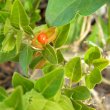
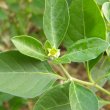
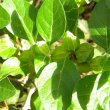
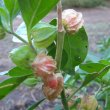
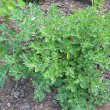
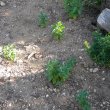


Discuss this plant
Share knowledge, ask a question or give an experience.